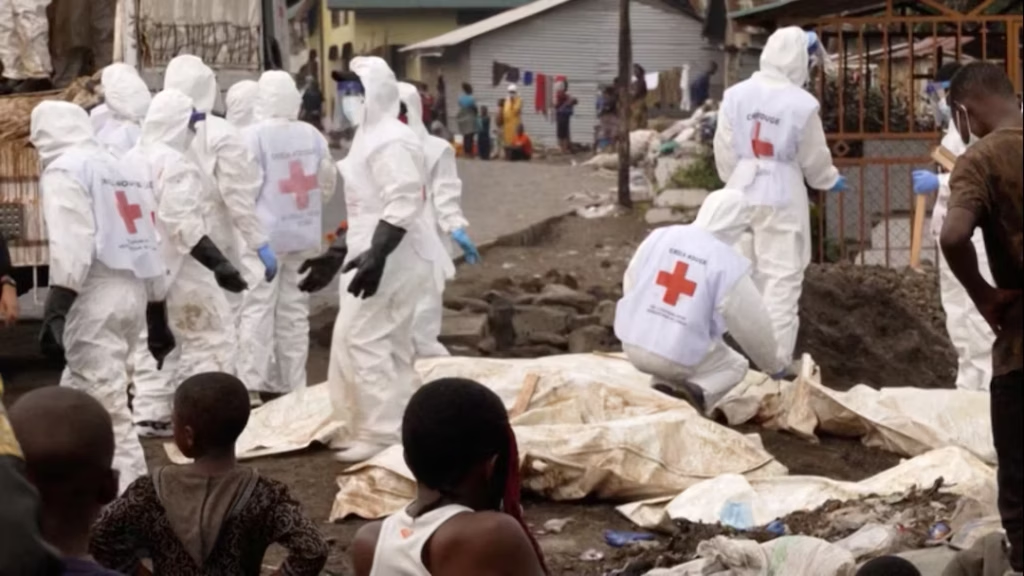WASHINGTON — President Donald Trump falsely cited footage of a mass burial in the Democratic Republic of Congo as evidence of murdered white farmers in South Africa, displaying the image during a tense Oval Office meeting with South African President Cyril Ramaphosa, Reuters confirmed Wednesday.

“These are all white farmers that are being buried,” Trump declared as he held up a printed screenshot of an online article accompanied by the image. The meeting, intended to repair strained diplomatic relations, turned contentious as Trump interrupted to claim white South Africans were facing a “genocide.”
However, the image shown by Trump was lifted from a February 3 Reuters video report documenting a mass burial in Goma, Congo. The footage was taken in the aftermath of violent clashes between Congolese forces and the Rwanda-backed M23 rebel group, not in South Africa, as Trump implied.
Reuters has since verified the original video, filmed by its journalist Djaffar Al Katanty. The image depicted humanitarian workers managing body bags at a burial site, not white South African farmers as Trump claimed.

The misleading photo appeared in a blog post published by American Thinker, a conservative website that referenced racial tensions in South Africa and Congo but did not clearly caption the image. It credited Reuters via a YouTube link. Trump showed the post to Ramaphosa as part of a presentation asserting widespread anti-white violence in South Africa—a claim rooted in long-debunked conspiracy theories.
Andrea Widburg, managing editor at American Thinker and author of the article, acknowledged the image had been “misidentified” by Trump but stood by the post’s argument about alleged “increasing pressure” on South Africa’s white minority. She described Ramaphosa’s administration as a “race-obsessed Marxist government.”
The White House has not responded to requests for comment on the misrepresentation.
Al Katanty, the Reuters journalist who filmed the footage, expressed disbelief at the misuse of his reporting. “It was shocking,” he said. “President Trump used my image, used what I filmed in the DRC, to try to convince President Ramaphosa that in his country, white people are being killed by Black people.”

The Oval Office meeting was part of Ramaphosa’s broader diplomatic effort to mend relations with the U.S., after Trump’s repeated public criticism of South Africa’s land reform policies and treatment of its white minority. During the meeting, Trump presented printed articles and videos that he claimed were proof of targeted killings of white farmers.
“Death, death, death, horrible death,” Trump repeated, flipping through his materials, which included unverified articles and discredited online sources.
The conspiracy theory Trump referenced—a supposed genocide of white South African farmers—has circulated for years in far-right circles despite being thoroughly debunked by experts and human rights organizations. The South African government has consistently rejected the claim, stating that it lacks any basis in fact.
The incident marks another diplomatic stumble as Trump continues to rely on far-right narratives and misinformation in international discourse. Analysts warn that such misrepresentations risk further damaging the United States’ global credibility.



